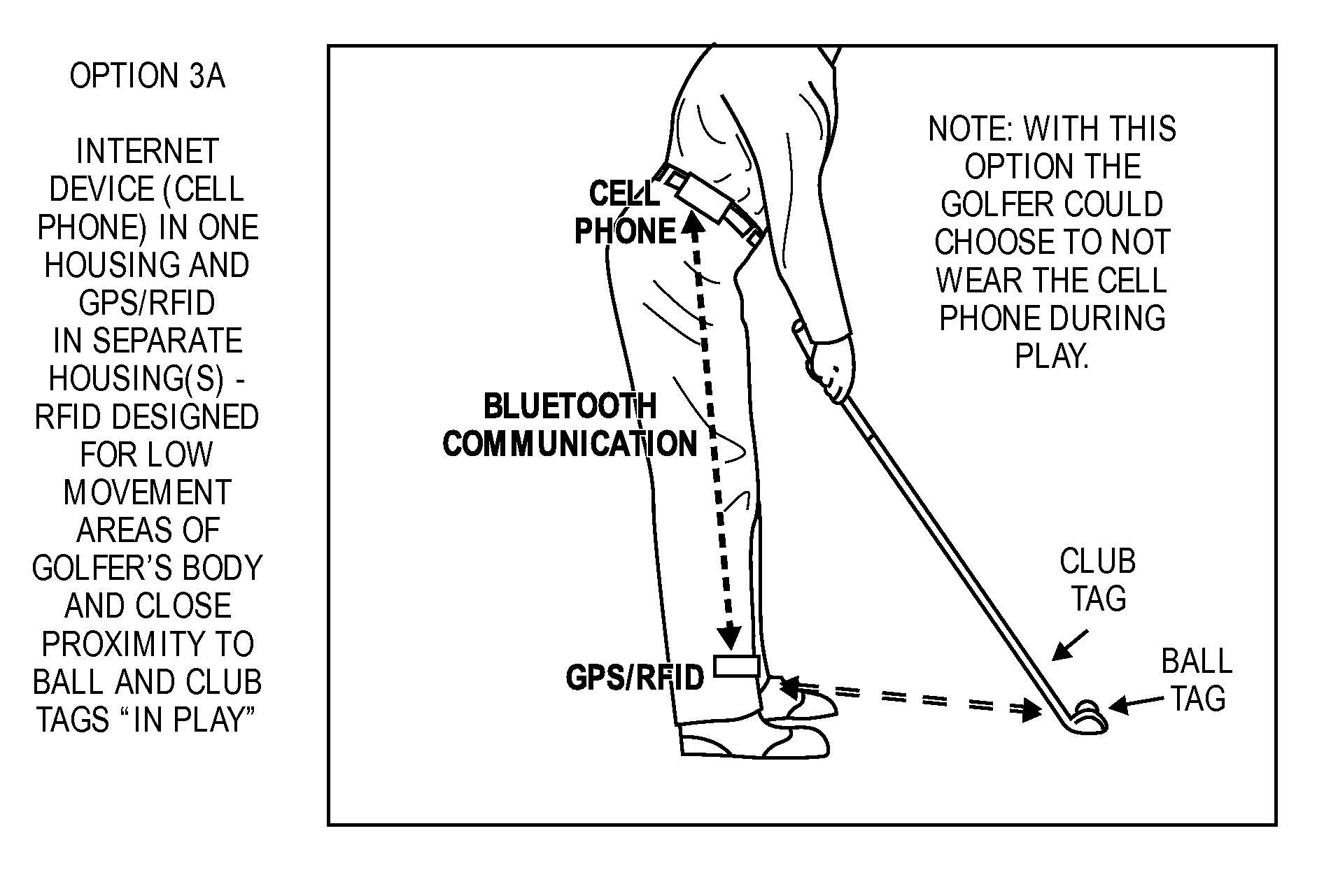Apparatuses, methods and systems relating to automatic golf data collecting and recording
a golf data and automatic technology, applied in the field of golf games, can solve the problems of inconvenient golfers to press, delay in the game, and inability to drive a golf car
- Summary
- Abstract
- Description
- Claims
- Application Information
AI Technical Summary
Benefits of technology
Problems solved by technology
Method used
Image
Examples
Embodiment Construction
RFID Tagged Golf Balls
[0069]An important aspect of the present invention is the ability to equip golf balls with tags in such a way that the performance of the golf ball is not changed in any way. The golf ball should be conforming to the rules of golf (USGA and R&A) and have the same performance and durability as a non-tagged golf ball. U.S. patent application Ser. Nos. 10 / 672,365 (filed on Sep. 26, 2003), 10 / 672,600 (filed on Sep. 26, 2003), and 11 / 248,766 (filed on Oct. 11, 2005) describe such golf balls with tags and these applications are hereby incorporated herein in their entirety by reference.
[0070]The tag may be active or passive but should use the architecture described above in order to be a high performance golf ball with high durability and conformance to the rules of golf. In an exemplary embodiment the tag used in the present invention is a passive RFID tag. The passive RFID tag in the ball will consist of an antenna made of elastic conductive material and an electric...
PUM
 Login to View More
Login to View More Abstract
Description
Claims
Application Information
 Login to View More
Login to View More - R&D
- Intellectual Property
- Life Sciences
- Materials
- Tech Scout
- Unparalleled Data Quality
- Higher Quality Content
- 60% Fewer Hallucinations
Browse by: Latest US Patents, China's latest patents, Technical Efficacy Thesaurus, Application Domain, Technology Topic, Popular Technical Reports.
© 2025 PatSnap. All rights reserved.Legal|Privacy policy|Modern Slavery Act Transparency Statement|Sitemap|About US| Contact US: help@patsnap.com



